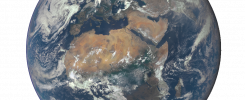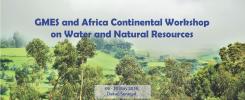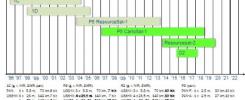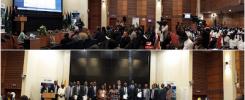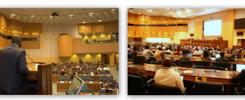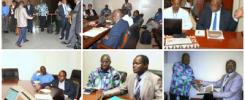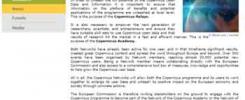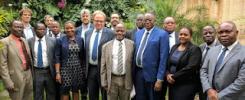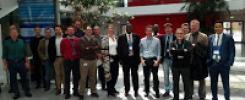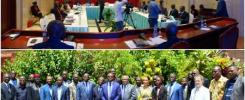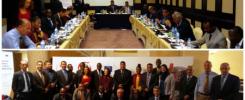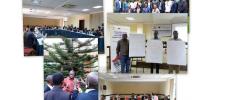Administrative Agreement between DG DEVCO and JRC
03 August 2017
JRC will continue in providing a support to the GMES & Africa implementing actors along the same lines as in the framework of AMESD and MESA projects, i.e. covering the institutional, training, and scientific/technological aspects.
Since the scope of the works differs (GMES & Africa has a smaller infrastructural component, and will build on the MESA stations), JRC is not expected to develop and distribute a brand new release of the eStation, but rather to ensure the evolution and adaptation of the 2.0 release, distributed within MESA, namely to make the Sentinel datasets available to the Users.
Accordingly, the contents of the joint activities will change, especially for the scientific and technical support.
Institutional and scientific support to the Project
- JRC participates in program steering committee meetings (PSC), technical experts meetings (TEM), peer review meetings and any other meetings as required.
- JRC provides scientific support routinely and upon ad hoc request, including distance support for the users, input for and revision of technical specifications of supply contract(s), ToRs for relevant service contracts, input in the development of new information services, and input to any other technical documents and activity formulation, as appropriate.
Adaptation and maintenance of eStation 2.0
- JRC ensures continued functioning of the MESA Stations and eStation 2.0, including integration into new version(s) of the operating system (CentOS), or into different OS, including Windows; upgrade of SW libraries incorporated in the Station 2.0.
- JRC integrates into the eStation 2.0 of additional SW components for the processing of Sentinel data, as made available by other providers (incl. ESA and third parties). The current approach of having the eStation 2.0 as a data pre-processor, and other down-stream tools for more specific analysis will be maintained, and possibly strengthened.
- JRC implements ad-hoc functionalities for facilitating the data analysis, based the Users feedback and requests, as collected during the MESA program.
- JRC facilitates the export of the generated products towards other analysis tools by automatically generating additional meta-data.
- JRC implements new processing chains to derive environmental indicators, especially derived from the new Sentinel datasets, and to serve additional GMES&Africa services and/or the evolution of the MESA services.
- JRC facilitates the access from the MESA Stations to EO datasets generated on different platforms (including cloud-computing solutions) through the EUMETCast channel (re-dissemination) or the internet (direct-access).
Training
Training activities, to be carried out by the JRC both in Europe (Ispra and other location according to the needs) and in Africa, will focus on the use of the eStation and the use of low and medium resolution satellite data managed by the system. On aspects related to other data than those indicated above and other information systems than the eStation (for instance high resolution data for forest inventories), the JRC will also provide support. Such support will be provided on a best effort basis, depending on the availability of institutional resources.
Training activities undertaken by the JRC will focus on regional implementation centers in Africa, which in turn are responsible for the training of staff at national level. The following main activities are foreseen with specific focus on the “training the trainer” approach.
- Organization of on-the-job training (OTJT) sessions at JRC premises for Staff from the RICs. The goal of the OTJT is to guide the RICs in the customization and usage of the eStation for implementing the operational monitoring services, according to the thematic needs. At least 2 experts from each RIC are expected to be invited at JRC for a period of 3 weeks, during the duration of the project.
- Provision of teachers/instructors for training sessions in Africa on the maintenance and exploitation of the eStation. A total of 12 missions, one week each, are foreseen for the IT training sessions, in English and French.
- Training on EO data use for Natural Resource monitoring: as in MESA, a number of missions will be performed to assist the RICs in implementing the methodology and making operational the data analysis chain. An indicative number of 10 missions to be conducted by a JRC Thematic expert is foreseen.
- Provision of teachers / instructors for training sessions in Europe.
- Includes writing of tutorials and preparation/upgrade of the distance education learning modules.
On the training component, the JRC will endeavor to work in close cooperation with the AUC GMES&Africa training coordinator and the RICs to ensure consistency with other continental and regional training activities. Most importantly, the JRC should be actively involved in the development of the GMES&Africa general training strategy to be prepared by the AUC GMES&Africa Project Management Unit in 2017.
Geographical area to be covered
The JRC support will cover the entire African continent.
JRC work will be performed mainly from Ispra (Italy). In addition to participation into programme steering committee meetings, technical experts meetings and peer review meetings -in Africa and in Europe - other missions will be performed whenever relevant. At least one visit per year to Addis Ababa is foreseen.
Target Groups
The primary target group of the support offered by the JRC under this arrangement is the DG-DEVCO and AUC GMES & Africa Unit, in their role to drive and coordinate the overall GMES & Africa initiative, and provide support to the African implementation partners.
Ultimately, the GMES & Africa Support Programme should be of benefit to African decision makers and private stakeholders operating in sectors that are related to the three thematic areas covered by the project (Water Resources, Natural Resources and Marine & Coastal Resources), the general public, and particularly vulnerable populations living in rural, forest or deserted areas and areas exposed to natural hazards.



